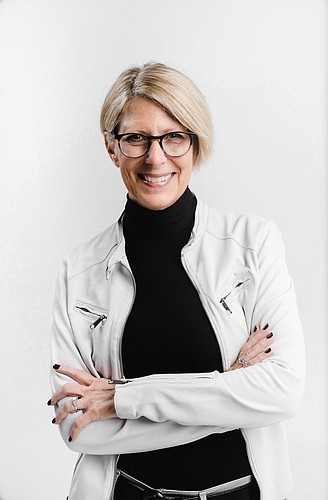- April 15, 2025
-
-
Loading

Loading

Brainstorming isn’t just for advertising and public relations agencies.
“Any group of people working together can do this, regardless of what their business is,” says Patricia Courtois, executive vice president and chief client officer of On Ideas. “I think it’s understanding how to get the best out of each other toward a common result. It’s not just for the creative services industry.”
On Ideas, an advertising, marketing and public relations firm with offices in Sarasota and Jacksonville, holds brainstorming sessions for client work to generate ideas for a wide variety of projects, from social media campaigns to naming product lines.
One of Courtois’ brainstorming rules happens before a session even starts. “You really need to get not all like-minded people in the room,” she says. “People need to come with a broad spectrum of experience so you have the value of their point of view.”
There’s also some magic to the number of people participating. Courtois says brainstorming works best with five to seven people. If a larger group is involved, it should be broken down into subgroups of three to four people. “If the group is too big, sometimes people don’t get as engaged as they could be,” she says.
Before a session begins, the group should be prepped on the problem the brainstorming seeks to address. Sometimes, Courtois says, she sends out a one-page brief ahead of a session, but she cautions against people being given too much information beforehand since it can limit ideas. An alternative is to pass out a paragraph of information right before brainstorming begins or hang it up in an area visible to all participants.
At the beginning of a session, participants should be encouraged to speak up: “Our role is to generate as many ideas as possible,” Courtois says. “It’s about the quantity.” Emphasizing quantity allows everyone to feel creative — and discourages any pressure people might feel to come up with the best idea.
Another key message to participants is simple but powerful: “No idea is a bad idea.” Plus, “Nobody gets to say it’s a bad idea.” It helps, she says, to have a facilitator who can respectfully minimize naysayers.
The main concept is to add onto ideas with new ideas, forming a continuous chain. “Every idea is fertilizer for that next idea," she says. "That one little kernel may spark something from someone else.”
Brainstorming can’t go on forever, though. “It’s really critical that you limit the amount of time,” Courtois says. “It creates urgency to come up with ideas.” Plus, giving participants too much time means people might get distracted and start side conversations.
Once a group finishes coming up with ideas, the next step is to sort and rank them. Courtois says for some clients, her team brainstorms lists of hundreds of ideas. Sometimes after sorting and ranking, they might send out the top 25 ideas and ask people to vote on their top five — and include why they’re voting for those choices.
After a session is completed, it’s important to follow up with participants. Courtois says people who helped should be told which ideas will be executed on. “It’s important to thank the people who participated,” she says.
Ultimately, it’s all about execution. Courtois says, “Whatever you’ve brainstormed has to feed into a final project.”
How to motivate people to meet sales goals
How to run an effective brainstorming session
How to get a business loan when you need one
Have a crisis to manage? Here's how
How to deliver potentially scary news to employees
How to go out on your own and leave a corporate gig and salary behind
How to launch a B-Corp that generates results
How to hire and train people fast
How to manage multiple generations in the workplace
How to provide exceptional service